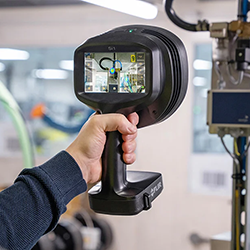Why Manufacturers Are Focusing on Cognitive and Predictive Asset Management
OESH Shoes - Manufacturing Story
How Executives Around The World View Industry 4.0
The Impact of the IoT on Energy Efficiency (Part 3 of 5)
When Should You Re-Manufacture or Refurbish Equipment?
America Makes, Laser Institute of America, Fab Foundation and Fab Lab Hub Collaborate in 2018 Digital Fabrication Conference
Combining augmented reality, 3D printing and a robotic arm to prototype in real time
TSN in my Network: Why, What and How?
Five Myths About Robotic Vision Systems
Organic molecules enable 3D printing of nanoscale metal structures
Shanghai instals 3D bus shelters
The Manufacturing Capitals of the World
Robot welding: More efficiency for programming and equipment fabrication
Manufacturing Transportation and Logistics 101
Injection Molding Design & Process Optimization
Records 1501 to 1515 of 1915
First | Previous | Next | Last
Engineering - Featured Product

